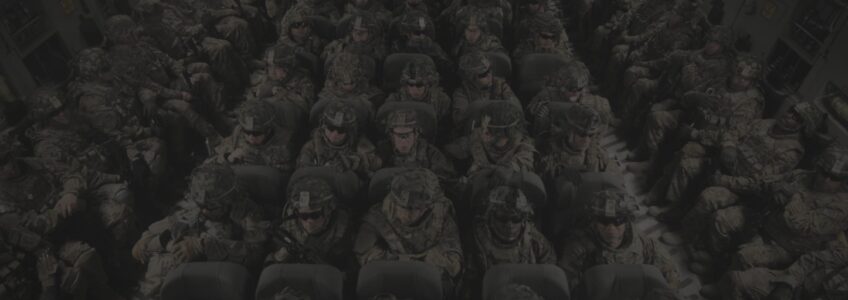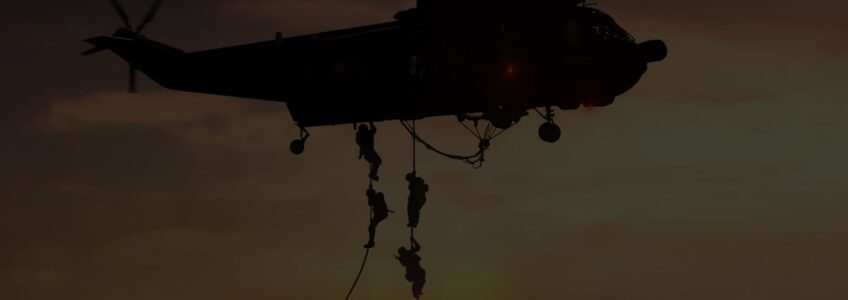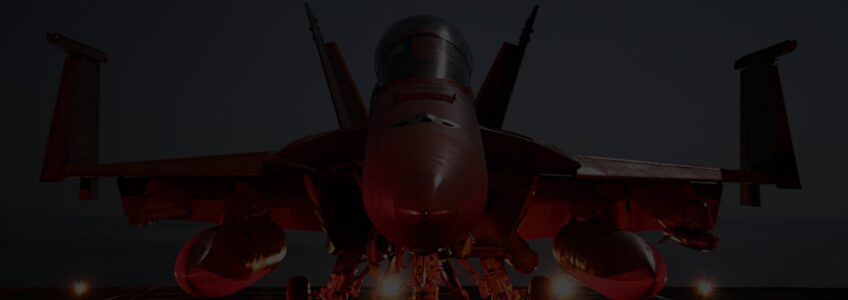Emergency Management in the Military: Levels, Requirements, Benefits, and Challenges
Whether it’s responding to a natural disaster, combating a terrorist threat, or managing a health crisis, emergency management is an integral part of military operations. Emergency management in the military refers to the systematic approach used to mitigate, prepare for, respond to, and recover from emergencies and disasters, both domestically and internationally.
What is Emergency Management in the Military?
Emergency management in the military is a broad term that covers a range of activities aimed at preserving life, minimizing damage, and restoring normalcy after an emergency or disaster. These activities can range from immediate relief efforts to long-term reconstruction initiatives. The aim is not just to respond to an emergency, but also to prepare for it, mitigate its impact, and effectively recover.
The Different Levels of Emergency Management in the Military:
Emergency management in the military is organized into different levels. Each level has specific roles and responsibilities to ensure a comprehensive and coordinated response to any emergency situation. The four major levels are:
Individual and Community Level: At this level, the focus is on educating and preparing individuals and communities to respond effectively to emergencies. This includes training military personnel and civilians on emergency preparedness, developing and communicating emergency plans, and encouraging proactive behaviors, such as creating emergency kits and evacuation plans.
Organizational Level: Here, emergency management involves planning, coordinating, and implementing emergency response operations within a military organization or unit. This includes everything from preparing for emergencies to responding to them and recovering.
Regional Level: At this level, multiple military units or bases within a specific geographical region coordinate their efforts to manage emergencies. This could involve sharing resources, intelligence, and manpower to ensure an effective and comprehensive response.
National Level: This is the highest level of emergency management, which involves strategic planning, policy development, and coordination of resources across different branches of the military and civilian organizations.
Requirements and Benefits of Emergency Management Across Different Branches of the Military:
All branches of the military have a role to play in emergency management. Whether it’s the Army, Navy, Air Force, Marines, or Coast Guard, each has unique capabilities and resources that are invaluable during an emergency.
Army:
The Army’s emergency management responsibilities typically encompass a wide range of ground-based operations. When a crisis strikes, their extensive logistics network facilitates the rapid mobilization of troops and resources. Specific operations include search and rescue missions, where specialized teams locate and aid civilians in distress.
In evacuation efforts, the Army uses heavy-duty transportation assets to remove civilians from hazardous zones to safety. This can be especially vital in situations where the civilian infrastructure has been compromised. Furthermore, the Army also offers its expertise in reconstruction efforts post-emergency, aiding in restoring essential services and rebuilding communities. As part of their emergency management training, Army personnel are educated on how to coordinate these efforts effectively and efficiently.
Navy:
The Navy’s primary contribution to emergency management is its maritime capabilities. They are equipped to provide logistical support through supply chain operations, transport of personnel, and deployment of medical services. With a fleet of ships at their disposal, they can carry out search and rescue missions even in the most challenging sea conditions.
Hospital ships are another key component of the Navy’s emergency management strategy. These vessels can provide medical aid to large numbers of people, mitigating the strain on local healthcare systems during crises. Navy personnel also receive extensive training in emergency management to ensure they can operate effectively during these high-stress situations.
Air Force:
In emergency situations, the Air Force’s capabilities become particularly critical. With their fleet of aircraft, they can perform aerial reconnaissance, providing real-time data on the ground situation. This information can be crucial for planning and coordinating effective responses.
The Air Force’s airlift capabilities allow for the rapid transport of personnel, medical supplies, and essential goods to affected areas. Moreover, they can conduct search and rescue operations in areas that may be inaccessible by ground or sea. Additionally, the Air Force often assists with weather monitoring and forecasting, providing vital information to predict the path and potential impact of weather-related disasters.
Furthermore, the Air Force’s emergency management is also critical in instances where foreign aid is required. Long-range aircraft can quickly deliver aid and humanitarian workers to disaster-stricken regions globally, helping to alleviate suffering and restore stability.
Marines:
The United States Marine Corps, recognized for its rapid response capability and operational versatility, is incredibly valuable in scenarios where timing is crucial. Marines can undertake a variety of emergency response operations, including but not limited to, combatting wildfires, flood relief efforts, and disaster response in the wake of earthquakes or other natural disasters.
Given their ability to respond quickly and operate in diverse environments, the Marines often find themselves at the forefront of emergency management. They are trained to adapt swiftly to new challenges and work efficiently in high-pressure situations to provide help where it’s most needed.
Coast Guard:
The Coast Guard’s role in emergency management is centered on protecting the nation’s coastlines and maritime interests. They conduct search and rescue missions in coastal waters and have a key role in enforcing maritime law, which becomes particularly crucial during emergencies at sea.
For instance, in the event of a shipwreck or maritime accident, the Coast Guard will lead the rescue operations, working to save lives and mitigate environmental damage. Additionally, they are often involved in response efforts for coastal disasters like hurricanes or oil spills. In these scenarios, they work to protect coastal communities and ecosystems from harm while aiding affected civilians.
The training for Coast Guard personnel includes specialized modules on emergency management, ensuring that they can handle the unique challenges posed by maritime emergencies effectively.
Each branch of the military has a distinct but interconnected role in emergency management. They work together, utilizing their unique capabilities to provide a comprehensive response to emergencies. This underlines the importance of training and preparedness across all branches to ensure efficient and effective emergency management.
Common Challenges Associated with Military Emergency Management and How to Overcome Them:
The discipline of emergency management in the military, while undeniably beneficial, is often fraught with complex challenges. These challenges may range from logistical hurdles and communication hitches to resource limitations and intricate coordination with civilian agencies.
One of the most prominent challenges is the logistical aspect of emergency management. Deploying personnel and resources to the right place at the right time requires strategic planning, especially in situations where every minute counts. Additionally, the terrain or location of the emergency can pose significant obstacles, especially when accessibility is limited.
Communication breakdowns are another hurdle military emergency management often faces. In high-pressure situations, effective communication is pivotal for coordinating efforts and implementing a successful response. Any delay or miscommunication can have serious consequences on the ground.
Resource constraints can also be a common issue. Having the necessary supplies, from medical provisions to food and water, and being able to allocate these resources effectively, is a monumental task, particularly in large-scale emergencies.
Lastly, there’s the complex task of coordinating with civilian organizations and government agencies. In a crisis situation, multiple entities typically work in unison. However, aligning objectives, strategies, and actions can be an intricate process.
Despite these challenges, military personnel can employ several strategies to enhance their emergency management efforts. A comprehensive and systematic approach, encompassing detailed planning, frequent training drills, robust communication systems, and synchronized operations with civilian organizations, is the cornerstone of successful emergency management.
Furthermore, the utilization of modern technology can drastically improve outcomes. Advanced software solutions, like the ones provided by Permuta, can offer real-time situational awareness, enable faster and more accurate decision-making, and facilitate more effective resource allocation during emergencies. In the evolving landscape of emergency management, such technology is more of a necessity than a luxury.
In conclusion, military emergency management is a demanding discipline filled with various challenges. But with a combination of methodical strategies and cutting-edge technology, these challenges can be overcome, leading to more efficient and effective responses when crises arise. Permuta is proud to support military personnel in their vital role of safeguarding lives and communities during emergencies. Contact us today to learn more about how our DefenseReady solution revolutionizes military emergency management.
The Rise of Virtual Reality in Military Training: A Game-Changer in the Field
As military operations grow more complex and our global landscape evolves, the training methods employed by the armed forces are also transforming.
One technology standing at the forefront of this revolution is Virtual Reality (VR), offering immersive and highly adaptable training experiences. In this post, we delve into the significant role of VR in military training, its benefits, and how it could shape the future of defense readiness.
The Advent of VR in Military Training:
Over the years, the military has always been a quick adapter of innovative technology for training purposes, be it in the use of simulators for flight training or computer-based learning for theoretical knowledge.
Virtual reality is the latest addition to this list, offering a whole new dimension of immersive and realistic training for soldiers. With VR, they can simulate various combat scenarios, engage in realistic drills, and prepare for real-world missions in a safe and controlled environment.
Benefits of VR in Military Training:
Enhanced Realism:
Virtual reality’s immersive nature allows soldiers to experience highly realistic training scenarios. Using VR headsets, trainees can virtually navigate through any environment – a battlefield, a military aircraft, or even a submarine. This simulated, yet life-like exposure helps in preparing them for the actual challenges they might face, enhancing their combat readiness.
Safety:
One of the most significant advantages of VR training is the safety it provides. Simulated training environments allow for mistakes to be made and learned from without the risk of real-world consequences, reducing the likelihood of injuries during training.
Cost-Effective:
While the initial investment in VR technology might be significant, it proves to be cost-effective in the long run. VR reduces the need for expensive physical resources and training locations. For example, flight simulations save on the massive costs of operating actual aircraft for training.
Customizable Scenarios:
Virtual reality allows for the creation of virtually any scenario for training purposes, from simple navigation tasks to highly complex combat situations. These scenarios can be adapted and adjusted to fit specific training objectives, ensuring the soldiers are aptly equipped to face various challenges.
How the Military Could Leverage Virtual Reality for Training:
The possibilities for VR to be an effective tool in military training are almost endless.
Combat Simulation:
Virtual reality can create highly realistic and immersive combat scenarios, allowing soldiers to practice manoeuvres, strategies, and tactics. These scenarios can include various combat situations, from urban warfare to jungle warfare, and can be adapted to train soldiers on how to respond to different threats.
Flight and Vehicle Simulation:
VR is increasingly used to train pilots and operators of military vehicles. From fighter jets to armored vehicles, VR allows for a safe and cost-effective way of gaining experience. Soldiers can learn how to handle these vehicles in different weather conditions, terrains, or combat situations without the risk and expense of operating the actual equipment.
Medical Training:
Virtual reality can also play a vital role in training medics. With VR, medical personnel can practice emergency procedures and protocols in a controlled yet realistic environment. For example, they can learn how to treat battlefield injuries under the pressure of combat situations without any risk to patients.
Mission Rehearsal:
Before actual operations, VR can be used for mission rehearsal, providing an exact replica of the operational environment. This allows soldiers to familiarize themselves with the terrain, understand their objectives, and practice their roles, thereby reducing the chances of operational surprises.
Physical and Mental Resilience Training:
Soldiers can be exposed to various strenuous situations in a controlled environment, thereby building their physical and mental resilience. This could involve dealing with extreme weather conditions, hostile environments, or stressful combat situations.
Leadership Training:
Virtual reality can simulate different battlefield situations that require decisive leadership, allowing for the training and assessment of leadership skills. It offers an excellent tool to evaluate decision-making capabilities under pressure, strategic thinking, and team management skills.
Maintenance and Repair Training:
VR can also be used to train soldiers on the maintenance and repair of complex military equipment. By creating virtual models of the equipment, soldiers can practice the necessary procedures repeatedly without the risk of damaging real equipment.
These examples are just the tip of the iceberg, and as technology advances, the potential applications of VR in military training continue to expand.
The Future of VR in Military Training:
As technology progresses, VR is expected to become an integral part of military training globally. Advances in haptic feedback, for example, are enhancing the tactile experience in VR, making simulations feel even more real. Moreover, the rise of AI is paving the way for more responsive virtual adversaries, ensuring soldiers face intelligent and unpredictable opponents during their training.
It’s clear that VR has the potential to revolutionize military training, providing a highly immersive, safe, and cost-effective method of preparing our soldiers for their duties.
Remember, the evolution of technology in military training waits for no one. With VR revolutionizing the way we prepare our forces for duty, it’s time to make sure we’re not just keeping up, but staying ahead. Get in touch with us at Permuta to find out more about how our solutions can enhance your training processes.
A Call to Embrace Modern Training Approaches:
While virtual reality is transforming the way military training is conducted, managing and tracking these training initiatives effectively remains crucial. That’s where Permuta’s DefenseReady solution comes in.
Our state-of-the-art system offers a comprehensive suite for tracking all training activities, from web-based tasks to physical fitness tests and weapon qualifications. With Permuta, you can ensure your personnel are ready to take on the challenges of the modern battlefield.
VR is only part of the equation for advancing military training. With the right tracking tools like Permuta’s DefenseReady, armed forces can ensure their training programs are effective, relevant, and setting up their soldiers for success.
Stay ahead of the curve in military training. Discover what Permuta’s DefenseReady can do for your organization today by contacting the team.
How to Effectively Update & Manage Military Service Records
As the world becomes more digitally connected, the management of military service records is no exception. More than just files in a cabinet, these records are now dynamic databases that require constant updating, tracking, and reporting. Military personnel know this is not just a bureaucratic requirement; it’s a vital part of ensuring readiness, tracking progress, and recognizing achievements. However, they also know that managing these records often comes with its own set of challenges.
From managing the records of service members, maintaining accountability, to scheduling training and readiness compliance efforts, personnel are often overwhelmed with administrative tasks. Many times this is layered upon multiple additional duty requirements taken on with limited training.This leaves less time for their core responsibilities. In this blog post, we explore some of these challenges and how Permuta, a defense ready software, can help streamline operations and simplify the management of military service records.
The Challenge: Complex Military Service Record Management:
Military service records are comprehensive files detailing a service member’s career. They include data such as bio information, training, assignments, awards, evaluations, duty status, and much more. Keeping these records up-to-date is a necessary but often challenging task. It requires precision, timeliness, and attention to detail.
The other challenge lies in dealing with multiple formats of data. Sometimes the data comes in as spreadsheets, PDFs, and other times in the form of official forms that need to be filled out manually. The task of managing, validating, and reporting on this data can quickly become daunting.
Moreover, the need for timely reporting and accountability means that there’s no room for error. And yet, the manual and fragmented processes often lead to just that – errors and inefficiencies.
Volume and Complexity of Data:
The sheer volume of data in military service records can be overwhelming. Each record contains multifaceted information including bio details, training history, assignments, awards, evaluations, and more. This complexity increases with each new service member, each new assignment, and each new evaluation. Managing this growing, high-volume data set is an increasingly demanding task that requires precision, consistency, and timeliness.
Data Validation:
Validating the data in military service records is crucial but fraught with difficulties. Outdated, incorrect, or inconsistent data can have significant implications, from impacting career progression of service members to misinforming strategic decisions. Manual validation processes are time-consuming and prone to human error, leading to inefficiencies and potential inaccuracies.
Reporting and Accountability:
In military operations, transparency and accountability are paramount. Service records must be accurately reported and readily available for review. The task of generating consistent, accurate reports can be daunting, especially when dealing with different data formats such as spreadsheets, PDFs, and official forms. Keeping track of updates and changes can also be challenging in a fast-paced environment.
Time-Consuming Administrative Work:
The administrative burden of managing service records can divert military personnel from their core duties. Filling out forms, updating records, scheduling training, tracking duty status – these tasks consume time and resources, potentially detracting from mission-focused activities.
How to Improve Military Service Record Management:
Addressing these challenges requires a modern approach, specifically designed for military service record management. The goal is to reach an integrated solution for data entry, validation, reporting, and tracking, significantly reducing the time and effort required for these tasks.
With the right approach, you can:
Automate and Streamline Processes:
Modern software solutions integrate advanced automation capabilities that significantly reduce the manual labor associated with managing military service records. They can automatically fill out forms, update records, and schedule tasks based on preset rules and triggers. This minimizes repetitive, time-consuming tasks and significantly streamlines administrative processes.
For example, when a service member completes a training course, the system can be set to automatically update their record, without the need for manual data entry. This not only saves time but also reduces the potential for human error.
By automating routine tasks, these software solutions free up military personnel to focus on their core responsibilities, such as strategic decision-making and mission execution, enhancing overall productivity and operational efficiency.
Ensure Data Accuracy:
Modern software solutions incorporate data validation features that can automatically cross-check and verify the information entered into the system. These tools can identify potential inaccuracies or inconsistencies, flagging them for review or correcting them based on predefined rules.
For instance, the software can ensure that service dates align logically, or that a service member’s rank matches the expected parameters for their years of service. This continuous, automated validation significantly reduces the risk of errors and ensures the information in the system is always accurate and up-to-date.
This level of accuracy is crucial in the military context, where incorrect data can have significant implications, such as misinformation in strategic planning or unjust outcomes in career progression for service members.
Simplify Reporting:
Reporting is a critical component of military service record management, promoting transparency and accountability. Modern software solutions simplify this process by offering customizable reporting features. Users can create reports based on specific data points, time periods, or other criteria, and these reports can be generated and delivered automatically on a scheduled basis.
For instance, a unit commander could schedule a monthly report that tracks the training progress of their team, ensuring they stay informed and able to make necessary adjustments. These software solutions can also format reports for different audiences, such as providing high-level summaries for senior leadership and detailed breakdowns for operational planning.
Improve Accessibility:
In today’s connected world, having access to information when and where it’s needed is crucial. Cloud-based software solutions offer secure, real-time access to military service records from any location with internet access.
Whether in the office or in the field, military personnel can update records, review data, and make informed decisions promptly. It also facilitates better collaboration as team members can simultaneously access and work on the same records, ensuring everyone is on the same page.
Cloud-based solutions also offer enhanced data security, with robust encryption and user authentication protocols ensuring that sensitive information is protected.
Transform Your Service Record Management Experience:
Managing military service records is a challenging yet crucial task. The complexities involved necessitate a shift towards modern, integrated software solutions that streamline processes and enhance efficiency. While there are various options available, Permuta’s DefenseReady software, with its comprehensive and user-friendly suite of tools, provides a robust solution to these challenges.
Take control of your records, your tools, and your actions, with a modern software solution designed specifically for military and military, federal, and civilian sectorsorganizations to improve their readiness. Learn more about Permuta or schedule a demo today.
Navigating the Wild with Technology: The Integral Role of DefenseReady in SERE Training
In the realm of military training, Survival, Evasion, Resistance, and Escape (SERE) is a rigorous program that grooms cadets to survive in the harshest conditions.
The world of SERE training is often gritty and raw, far from the glimmering images of high-tech military operations we might conjure up. However, it’s precisely in this environment that technology, specifically Permuta’s DefenseReady software, plays a fundamental role in enhancing and streamlining these critical training programs.
Entering the Wilderness:
The concept of SERE training might seem like it’s all about getting back to basics. In the wilderness, cadets learn to construct makeshift shelters using available resources, whether it’s branches, leaves, or even snow. They’re taught how to identify which insects provide the most nutrients, essential knowledge when sustenance options are limited.
It’s here they master the art of evasion, learning skills as primal as using mud for camouflage. These are some of the “fun” yet essential activities that make up the rigorous SERE training regime.
Behind the scenes of this primitive survival training, however, there’s an efficient, high-tech system working tirelessly to ensure everything runs smoothly. This is where Permuta’s DefenseReady software, operating on Microsoft’s Power Platform, comes into play.
The Silent Workhorse:
In the challenging environment of SERE training, DefenseReady acts as a silent workhorse, diligently structuring, managing, and assessing these training sessions. Think of it as the backbone, providing structural integrity to the programs, ensuring that every training module is well-coordinated, and every cadet’s progress is meticulously tracked and recorded.
Customization: The Key to Adaptability:
While every student learns how to adapt to the elements for survival, DefenseReady adapts to the specific needs of different training programs. The software’s impressive customization capabilities allow it to cater to unique training requirements.
For instance, consider a specialized module in water evasion techniques. DefenseReady can be tailored to manage the specifics of this module – scheduling the session, keeping track of individual performances, and even providing data-driven insights to enhance the effectiveness of future training. It’s a solution that’s as adaptable as the students it helps train, ready to evolve with the ever-changing demands of military programs.
Feedback and Continuous Improvement:
One of the most powerful features of Permuta’s DefenseReady software is the Training Management capability which allows forecasting and tracking of every planned class, allocation, enrollments and requests, instructors, students, and training events. All of these items are conveniently managed from a single window. To ease AARs and feedback, the built in Survey Management feature helps gather feedback from trainers and trainees for continuous improvement.
As a result, the training programs continue to progress, equipping students with skills that are increasingly relevant and effective in real-world situations.
Security: The Pillar of Trust:
When discussing the multifaceted benefits of DefenseReady, its robust security features deserve special mention. The software has been designed to uphold the highest standards of data protection, adhering strictly to security regulations. This ensures that all sensitive information related to military training remains secure and confidential.
Resilience and Adaptability Across Both Human and Technological Resources:
SERE training is a testament to human resilience and adaptability. It pushes cadets to their limits and teaches them to survive under the harshest conditions. At the same time, behind the scenes, Permuta’s DefenseReady software works to ensure these programs are seamless, effective, and continually evolving.
The next time you envision a student applying mud as camouflage or crafting a makeshift shelter, remember the silent ally working in the background. This high-tech, sophisticated software solution ensures every bit of the learning experience is as efficient and impactful as possible.
In the world of SERE training, it’s not just about survival in the wilderness; it’s about harnessing the power of technology to enhance readiness, foster continuous improvement, and shape the future warriors of our nation. From insects to algorithms, the journey of survival and readiness is now intrinsically linked with the evolution of technology.
Learn more about Permuta’s training capabilities and other Human Capital Management tools for military and civilian agencies with a guided demo.
Enhancing Efficiency & Accountability With Defense Readiness Software
In the fast-paced, high-stakes world of military and federal operations, inefficiencies can translate into significant losses in time, resources, and potential outcomes.
Permuta’s software solutions are designed to mitigate these inefficiencies by providing seamless, integrated, and secure platforms to manage personnel, assets, training, and more.
Let’s imagine a hypothetical scenario to illustrate the critical role Permuta’s software could play in these sectors.
Scenario:
The North Eastern Federal Agency (NEFA) is faced with managing an extensive network of operations involving thousands of personnel and assets. These include the management of diverse facilities, equipment, logistics, and supply chains, all of which need to be executed meticulously and on schedule.
However, the agency is struggling with two main issues: inconsistent workforce management and inefficient asset management. Their current systems are fragmented, resulting in operational inefficiencies and hampering effective decision-making.
Permuta’s Defense Readiness Software in Action:
Streamlining Workforce Management:
As NEFA transitions to Permuta’s FederalReady software, the first noticeable change is the improved workforce management. The solution’s comprehensive suite of Human Resources apps provides a unified platform to track personnel records, monitor work hours, and manage shift scheduling.
For example, Major Anderson, responsible for overseeing the agency’s HR, can now efficiently allocate resources for an upcoming mission, taking into account factors such as personnel availability, skill sets, and work hours.
The software’s predictive analytics also allows him to forecast staffing requirements based on previous trends, ensuring that NEFA is never under-staffed or overstaffed.
Enhancing Asset Management:
Next, NEFA is faced with an impending large-scale deployment, requiring the efficient use and management of its assets. Previously, the agency struggled with tracking the life cycle of its assets.
However, Permuta now enables Captain Rodriguez, in charge of logistics and asset management, to easily monitor all the assets from acquisition to disposal.
Using the software, he can see the real-time location and status of assets, track their maintenance history, and predict future maintenance needs. If a critical piece of equipment is nearing the end of its life cycle, the software’s predictive capabilities will alert Captain Rodriguez, allowing him to take preventive measures and avoid unexpected equipment failure during critical operations.
Beyond Workforce and Asset Management:
The possibilities with Permuta’s DefenseReady software stretch far beyond workforce and asset management. Delving into the software’s numerous capabilities uncovers a hub of highly integrated solutions tailored to cater to different facets of military and federal agency operations.
Financial Management:
Consider a situation where Major Smith needs to manage and track various financial details associated with his team. Using DefenseReady’s financial management module, he can consolidate all special pays and government credit card details into one place, ensuring every financial aspect is under control.
For instance, when a government credit card is issued to Sergeant Taylor, the software records the card type, associated briefing dates, and more. When Taylor uses the card for approved expenses, those transaction details can be imported and tracked seamlessly, painting a transparent picture of expenses.
Budgets and Contracts:
As the fiscal year approaches, Lieutenant Davis is tasked with preparing a detailed budget for the upcoming quarters. With Permuta’s software, he can outline quarterly authorizations and allocations, providing a roadmap for financial operations throughout the year.
In another scenario, when the agency signs a contract for a new equipment upgrade, all the related details, including sub-contracts, can be recorded and tracked within the software. This ensures that every contractual detail is accessible, promoting efficiency and organization.
Operational Efficiency:
Imagine a situation where Captain Johnson is coordinating a major deployment. With the software’s operations files, he can track the deployability status, capability, and dwell data of each team member.
He can also check their passport and visa details, ensuring everything is in order for an overseas mission.
Training Academy:
Meet Private Lewis, a fresh recruit eager to map out her learning and skill development journey. With Permuta’s DefenseReady software, each step of her path is seamlessly tracked and consolidated.
From her initial briefings to physical fitness training, from specialized courses to on-the-job practicals – everything is logged in detail in the ‘Training Files’, ‘Courses’, and ‘Class Events’ modules.
The software doesn’t stop at logging data; it fosters proactive learning. For instance, the ‘Training Plans’ module provides Lewis with a comprehensive snapshot of her training journey – what she has completed and what lies ahead.
On-the-job training details are meticulously tracked, and a self-serve area called ‘My Training’ allows her to launch web-based courses and download certificates. In essence, Permuta’s DefenseReady software becomes an integral part of Lewis’s growth, crafting a dynamic and efficient training environment tailored to her needs.
From Chaos to Clarity:
The use of Permuta enables NEFA to transform its operations, eliminating inefficiencies in workforce and asset management and significantly improving its overall operational effectiveness. Not only does this save time and resources, but it also enables the agency to focus on its primary mission: safeguarding national interests.
This simulated scenario, although hypothetical, illustrates the myriad of challenges that military and federal civilian agencies encounter daily. It underscores how Permuta’s software can provide practical, effective, and scalable solutions to meet these challenges.
Learn more about how Permuta can enhance operational readiness for military and civilian agencies. Contact the team today.
Enhancing Military Workforce and Asset Management
With an increasing demand for resource and time efficiency in the public sector, the need for an effective, unified software solution has never been more evident. Disparate challenges in workforce management, asset management, and more are becoming increasingly problematic for military and federal civilian agencies.
Enter Permuta’s modern secure cloud-based Human Capital Management and Asset Readiness software solution, a game-changing mechanism built to bridge the gap and simplify these complexities.
Revolutionizing Workforce Management:
The management of human capital within federal agencies and the military sector is a complex task. From tracking personnel records and skills to efficiently scheduling work shifts, it can be a daunting task.
This is where Permuta’s COTS software solutions play a crucial role.
The software offers an intuitive and user-friendly interface, allowing for easy management of staff across different departments and levels. Permuta’s solutions, DefenseReady and FederalReady, enable real-time scheduling and tracking of employee hours, thereby reducing the workload of HR and administrative departments.
Moreover, the integration capabilities of Permuta’s software allow seamless communication between different systems, ensuring all data related to workforce management is in one place and easy to analyze.
Streamlining Asset Management:
In both the military and federal context, asset management goes beyond the simple tracking of physical items. It involves maintaining a detailed record of the asset’s life cycle, from acquisition, utilization, maintenance, and disposal. Permuta’s COTS software excels in this area, offering an advanced asset-tracking system that optimizes the use of resources and minimizes waste.
The software allows for real-time tracking of assets, including their current status, location, and maintenance history. Furthermore, it aids in predictive maintenance, thus minimizing downtime and increasing the overall efficiency of operations. By ensuring a streamlined and automated asset management process, Permuta’s COTS software significantly reduces the risk of human error and improves decision-making.
Going Beyond the Basics:
Permuta’s software does more than just tackle workforce and asset management. It has a comprehensive range of applications that address several other challenges faced by military and federal civilian agencies. This security management, training, facilities management, readiness and compliance, to name a few.
One of the key benefits of Permuta’s COTS software is its scalability and customization. Despite being a pre-packaged software, it offers significant flexibility and can be tailored to meet the unique needs of different agencies. This flexibility ensures that as the organization grows and its needs evolve, the software will adapt and continue to provide value.
Finally, Permuta’s commitment to security is unparalleled. With cyber threats becoming a major concern for federal agencies, Permuta has incorporated robust security features into its software to ensure data protection. The software complies with all necessary regulations, providing agencies the peace of mind that their sensitive data is in safe hands. It also contains powerful tools that allow agencies to track IT privileged users and certifications for 8140 compliance.
Bringing Military and Federal Organizations Efficiency and Adaptability:
In a world where efficiency, security, and adaptability are key, Permuta’s COTS software provides a holistic solution to the workforce and asset management challenges faced by military and federal civilian agencies. By seamlessly integrating into existing systems and offering solutions that improve readiness and efficiency, Permuta’s software is transforming the way these organizations operate.
Learn more about Permuta or schedule a personalized demo – Contact the team today.






